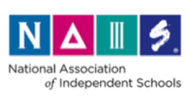On the fourth day, we visited the facility where Cobham tests parts to determine if they are able to work in radiation without malfunctioning. While there, we learned about the history of computer chips and got to see the effects of radiation in action. After splitting into two groups, the first group went on a tour of the facility, led by Mr. O. Mr. O. had a fun personality, and seemed to really enjoy his work and giving us a tour. We first got to see the original blueprints of the building, then we moved on to the more interesting parts of the facility. We toured the workspaces where the people design parts and talk to customers. Next, we moved on to the testing areas. In the testing areas, we got to look into a lot of the rooms from the entryway and we learned what kinds of tests were done by each machine. While some of the machines are old, they still work well when used by skilled workers. Next, we visited the radiation testing areas, which were my absolute favorite part of the tour. We learned how the radiation was formed and tested. We learned how radiation worked, then we got to see it in action. Mr. O. set up a webcam in the test chamber, with wires connected to his computer outside the chamber, so we could see the effect of non-visible photons on the camera. After the tour, the groups traded places to learn about the history of computer chips and how they are able to process information. We also got to learn what was done to protect the chips against radiation. The chips for space usage are frequently made from older transistors, because they are larger and a single hit from radiation is less likely to ruin the transistor. Overall, I really liked the insight into the science of computers that the Cobham visit provided, as I am interested in computer science and learning about the working of computers fascinates me.
 On March 7, 2016, we worked on our bridges. We met briefly in the morning to share some articles about engineering, but the rest of the day was spent cutting and fastening pieces of wood to make our bridges. We are almost done with the bridges at this point. We have not put together many of the pieces, but the pieces have been made for the most part. We have not hung cables yet either, but that will come once the rest of the bridge structure is ready to be assembled. Hopefully, some of the early groups can start on cables and final assembly tomorrow.
On March 7, 2016, we worked on our bridges. We met briefly in the morning to share some articles about engineering, but the rest of the day was spent cutting and fastening pieces of wood to make our bridges. We are almost done with the bridges at this point. We have not put together many of the pieces, but the pieces have been made for the most part. We have not hung cables yet either, but that will come once the rest of the bridge structure is ready to be assembled. Hopefully, some of the early groups can start on cables and final assembly tomorrow.
The group using an arch design (Jake J., Kaylee L., Sabrina J., Payton M.) worked on the arches for their suspension bridge. They had already made the arches, but today’s task was to make them fit with the towers of the bridge so that they could be fastened. They had to measure and cut at angles with a myriad of tools, but it worked out pretty well. Now, they just have to put it all together and string the cables from the arch to the bridge deck.
The group with angled support towers (James K., Haddie G., Sabryn S., Joe L.) finished all of their support towers, which were very interesting. They are triangular in nature but one piece is longer than the other, making the other a support beam. It was very complicated for them to drill and cut at the right angle, but they made it work. They had to use 10-inch long bolts to fasten these towers together. They now have to string the towers to the bridge joists, which will support the deck.
The group using pyramid towers (Jake F., Joosung K., Nolan J., Reese W.) worked on four support towers and a step to their bridge. They cut plywood with a jigsaw for their pyramid-shaped towers. Also, they drilled several pieces of wood to make a table, which will be the step up to their bridge. They still have to work on the decking and put together the joists, and then string it all from the towers.
The group with artistically designed towers (Hayden G., Franziska W., Moises B., Joey C.) worked on cross-bracing their towers. They used a protractor to measure the angles and the chop saw to cut them. They cross-braced the frame of their intricate towers. They also fastened the holds for their catenary curve, which will be made by the cords we will add tomorrow.

The group with fancy cables (Gabriel G., Miles G., Katherine H., Kitty B.) started working on the decking for their bridge. They finished their support beams for the bridge towers. They got to use the table saw to slice a huge piece of plywood, featuring a bench for moral support. Their decking is to be done in a fabulous style with integrated sheet metal and the cables will shoot from the towers and connect to multiple parts of the deck.





